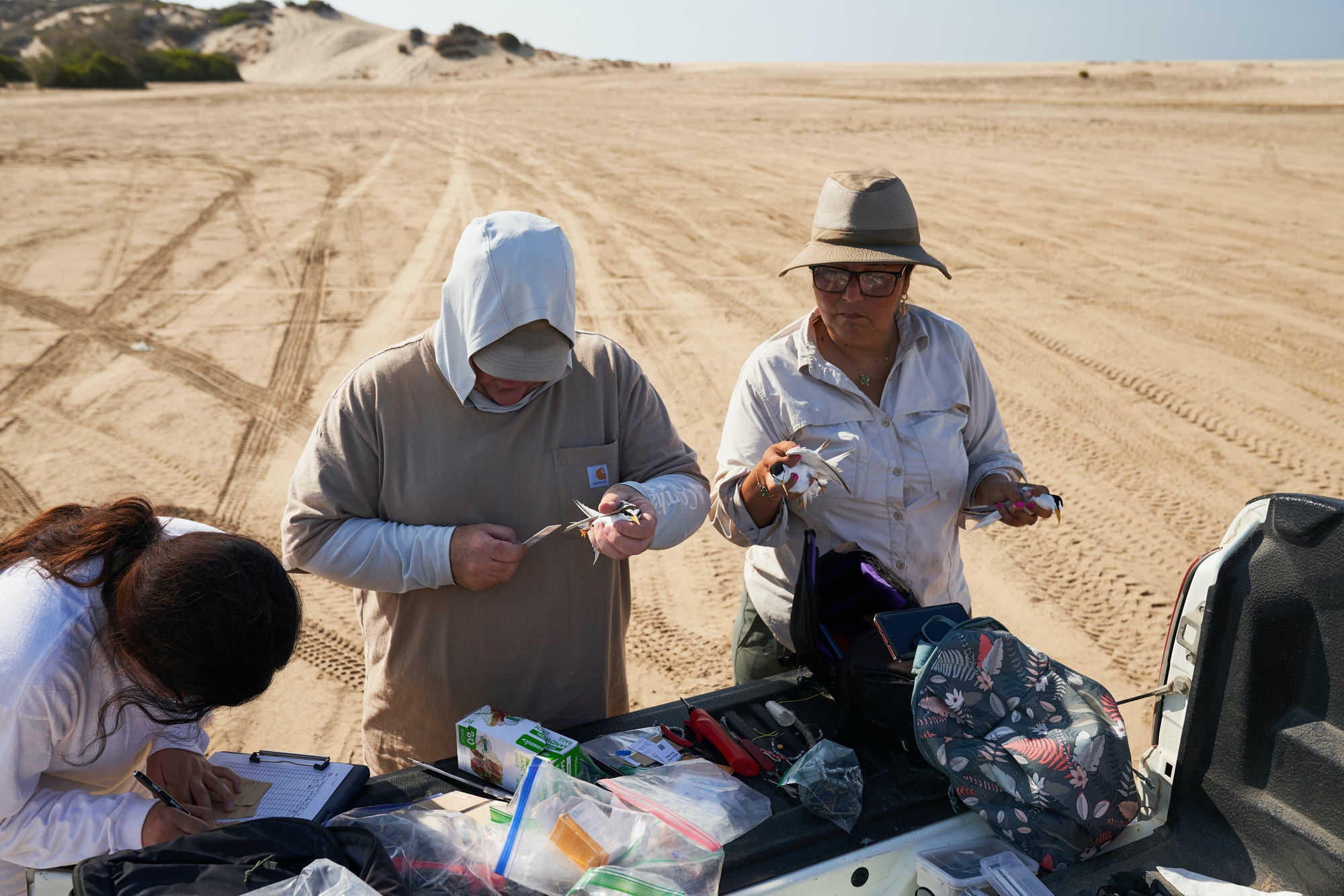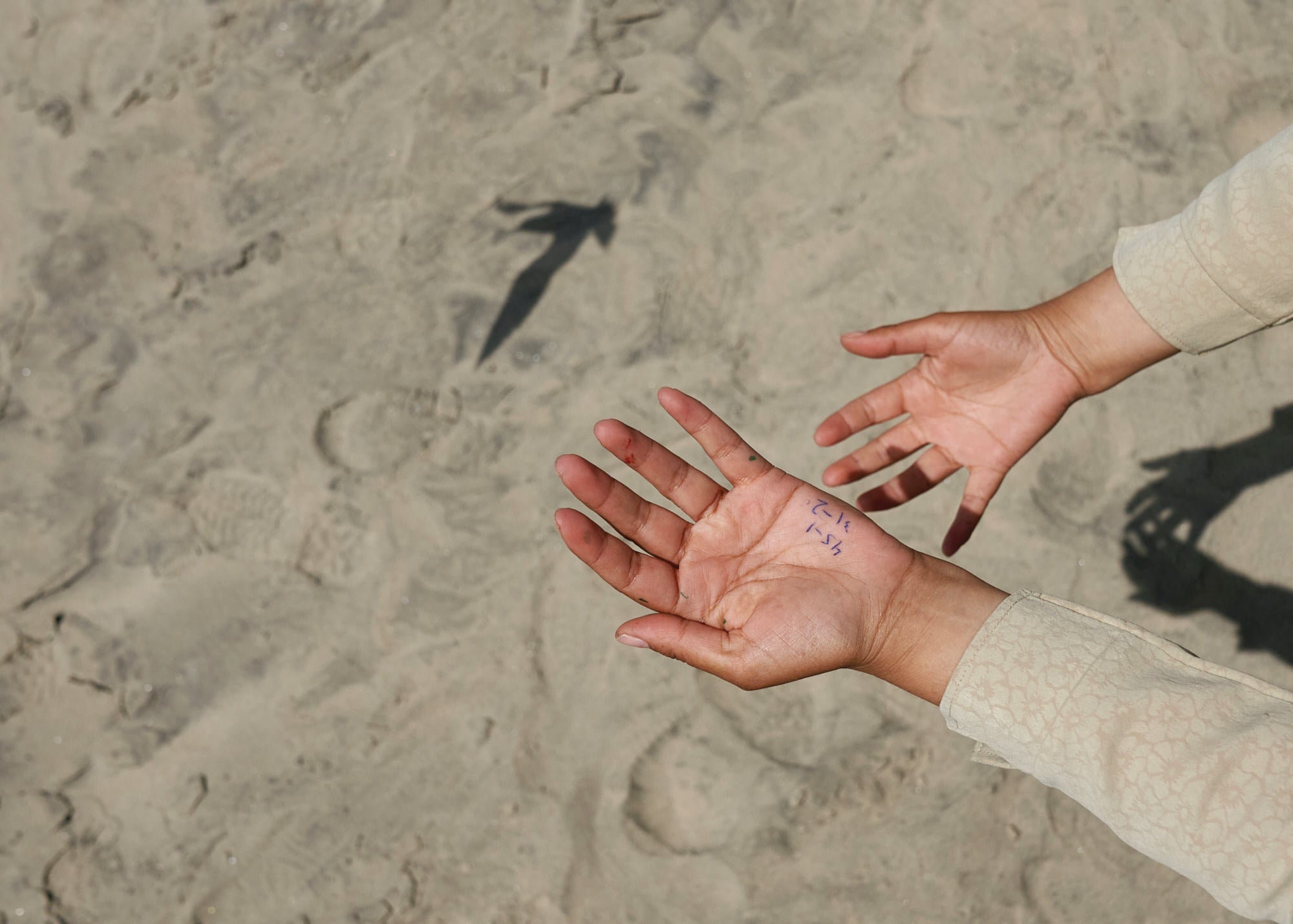During the pandemic lockdown, we all found some new interests and hobbies. While some people got really into sourdough and puzzles, Céline Haeberly (@celinehaeberly) was exploring her neighborhood nature areas and becoming deeply invested in California Least Terns. Haeberly is a commercial product photographer based in Southern California. She worked as the lead photographer for ASICS for many years. During the pandemic she found a new love for conservation photography and making meaning with her images. Haeberly is working on her first long-term project that connects communities, birds and their shared environments. We connected with her to learn more.
Product Preview – In This Article You’ll Find:
–Sony Alpha 9
–Sony 24-70mm f/2.8 G Master
–Sony 70-200mm f/2.8 G Master
–Sony 200-600mm f/5.6-6.3 G
Photo by Céline Haeberly. Sony Alpha 9. Sony 24-70mm f/2.8 G Master.
Discovering Conservation Photography
In 2020 and 2021, like most of us, Haeberly was craving outdoor time. She began spending time at Bolsa Chica Ecological Reserve, the largest remaining estuary in Southern California, which was essentially located in her backyard. "I would go there to shoot for fun in my free time,” she explains. “Not only is it a birding destination, it is a special place for locals to experience nature and wildlife in one of the most densely populated counties in California. I looked into volunteer opportunities because I wanted to give back and that is how I started working with the California Least Tern in 2021."
At the same time, Haeberly was learning more about conservation photography – a genre of photography that aims to use imagery and storytelling to move the needle on conservation issues. She says that learning more about it and learning from other photographers shifted her perceptive on photography. “I resonated a lot with using photography to tell stories about the environment that are meaningful to me."

Photo by Céline Haeberly. Sony Alpha 9. Sony 24-70mm f/2.8 G Master.
The program Haeberly volunteered for is called “Eyes on the Nest Site (EONS).” It came about from a collaboration between the California Department of Fish and Wildlife (DFW) and the California Department of Parks and Recreation, the Bolsa Chica Conservancy (BCC). Volunteers spend a few hours a week observing, collecting data or working on habitat restoration efforts for two bird species: the endangered California Least Tern and the threatened Western Snowy Plover.
The confluence of learning about conservation photography and the time Haeberly was spending at the ecological reserve became the impetus for her to launch a long-term documentary project on California Least Terns.
The California Least Terns
California Least Terns are in the gull family. The smallest of the North American terns, they are migratory seabirds that breed primarily along the California coast and their populations have been threatened for quite some time. They were listed by the State and Federal Government as Endangered in 1973, and their population rebounded from 600 to 7000 pairs. This was mostly due to predator management and protection of nesting sites on sandy beaches from disturbance. Unfortunately, in California, sandy beaches are also important for tourism and recreation so the terns were confined to small, protected colony sites. These few sites increased in numbers and became increasingly attractive to predators such as crows, ravens, and raptors. This combined with declines in small fish including their favorite anchovy has led to a steep population decline to about 3500 pairs.

Photo by Céline Haeberly. Sony Alpha 9. Sony 200-600mm f/5.6-6.3 G.
The California Least Tern occurs from the San Francisco Bay, south to at least San Quintin. Other populations of least terns also occur in the central and southern Baja California Peninsula and in the Gulf of California. The research team Haeberly is working with are studying how these populations may or may not connect to the California Least Tern.
Up until she began volunteering, Haeberly had been viewing and photographing these birds from behind a fence put up to protect the area. As she began volunteering, she learned more and more about the species. This experience sparked a curiosity in Céline, one question led to another, and she found herself compelled to photograph the birds, the research and the conservation efforts.
The Human Element Of Conservation
Haeberly began working with an ornithologist named Tom Ryan. She began to travel with him to photograph him and the birds. She learned that there were many other nonprofits and enthusiastic individuals monitoring the species throughout its range. She was fascinated by the idea of these people who didn’t know each other, but were connected through their passion and dedication to the California Least Tern. Her project, titled Least Resistance, became about the people in addition to the bird. A major focus of the story is the community created by the birds. “In connecting these seemingly disparate conservation communities, the common narrative sheds light on what it takes and means to survive in an increasingly disconnected, natural world.”

Photo by Céline Haeberly. Sony Alpha 9. Sony 24-70mm f/2.8 G Master.
How One Genre Of Photography Can Influence Another
This is Haeberly’s first experience in conservation photography, so there was a bit of a learning curve. She compares her experience to that of studying least terns. “No science happens overnight, there is a lot of trial and error. And my story kind of mirrors that.”
She continues, ”While I love photographing a story about a bird, my focus has been photographing the people behind the birds and combining those images with bird portraits. Bird photography is a new challenge for me and in a lot of ways my commercial background is shaping the types of photographs I'm taking."
Haeberly goes on to say that she is trying to take her commercial background and apply it to conservation. Sometimes thinking about bird portraits and how they connect with her human subjects helps her see it in fresh ways, or she thinks about light differently since she is so used to working in a studio. She also utilizes mood boards to conceptualize her ideas. She’s using diptychs of portraits paired with other shots to connect the themes she’s interested in. “At the end of the day, I am trying to visually explore the relationship people have with nature.”

Photo by Céline Haeberly. Sony Alpha 9. Sony 200-600mm f/5.6-6.3 G.
She also said that the gear she uses has been critical to the project's success. Haeberly shoots with the Sony Alpha 9, the Sony 24-70mm f/2.8 G Master, the Sony 70-200mm f/2.8 G Master and the Sony 200-600mm f/5.6-6.3 G. “I love the tracking capabilities for in-flight shots – that has been amazing. These birds are so small that sometimes you can’t see them without binoculars, so this project would not have been possible without the 200-600mm.” She also utilizes silent shutter to minimize her impact on the birds and the researchers.
Looking Ahead
Now, Haeberly has photographed this project for two migration seasons. She says that she has fallen in love with long-term documentary projects. Each season she learns much more, but more questions come up as well. "For me, there are just so many different layers of discovery and connectivity within the California Least Tern story. While I find the scientific research fascinating, it is also important to document the growth of the community and how people in the United States and Mexico are working together because these birds are borderless and give people a reason to connect along shared coasts." She explains that it’s been amazing to see how many stories exist within this story.

Photo by Céline Haeberly. Sony Alpha 9. Sony 24-70mm f/2.8 G Master.
Ultimately for this project, Haeberly has two goals in mind: firstly to educate people about the least terns and actions they can take to help protect the endangered species. Secondly, to create art for the community working for the terns. She is inspired by their work and wants to give back to the community in her own way.
If you’re interested in supporting and learning more about the conservation of the California Least Tern check out more on the Bolsa Chica Conservancy (Huntington, California) and Pro Esteros (Ensenada, Baja California).
Find more of Céline Haeberly’s work on Instagram @celinehaeberly.


























